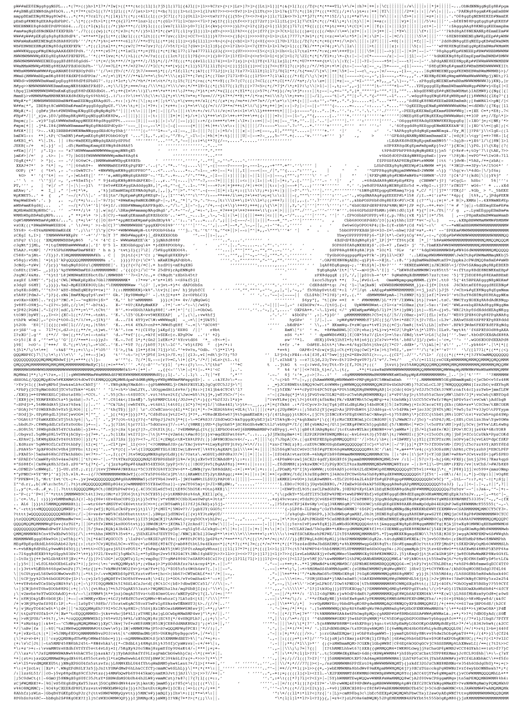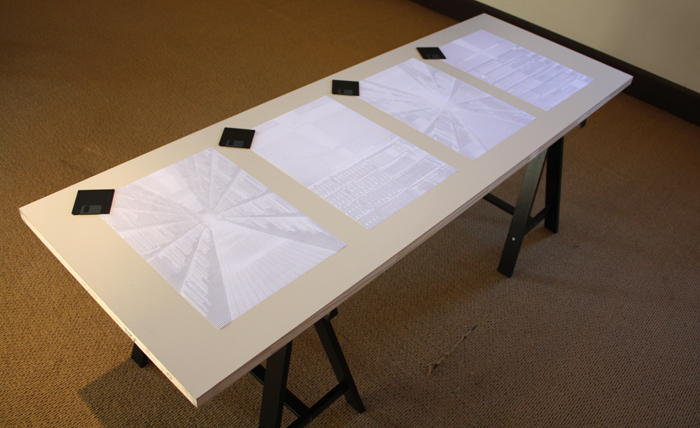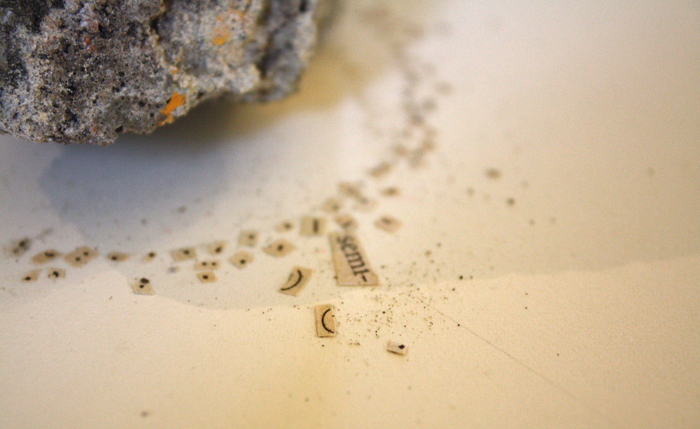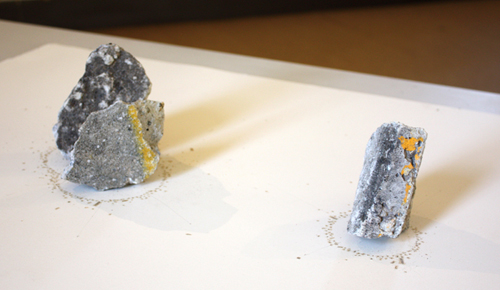The Accumulation of Sediment
Benjamin Forster ('art'), with Robert Briggs & Niall Lucy ('words')
‘Our words no longer correspond to the world. When things were whole, we felt confident that our words could express them. But little by little these things have broken apart, shattered, collapsed into chaos. And yet our words have remained the same.’
—Peter Stillman in The New York Trilogy (77)
Writing is literally graphic.
The ancient Greek word graphe refers both to ‘writing’ and to ‘drawing’, where ‘to write’ meant originally ‘to scrape’ or ‘to scratch’ (on a clay tablet with a stylus). In the beginning, as it were, it could have made no sense to say that a picture paints a thousand words.
And so it could be that these works of Benjamin Forster’s recall a certain beginning, a time when there was making (perhaps even the conscious attempt to communicate or express) but not (quite) yet writing and/or drawing.
If the seemingly digital nature of these artworks, then, lends them the appearance or the illusion of ‘post’-art, no less than of ‘post’-writing, they are also utterly primordial.
They are made, but by what function?
If writing is a function we assign to authors, and art a function we assign to artists, what do we call the one who writes art? And what do we call a written work of art that is not (quite) a work of literature, at least not in the standard, specialised sense of that term?
...
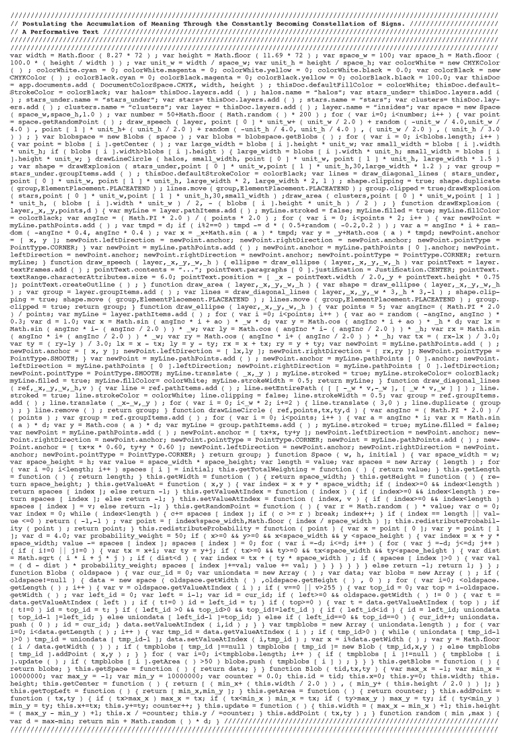
Benjamin Forster, Postulating the Accumulation of Meaning Through the Constantly Becoming Constellation of Signs. Code.
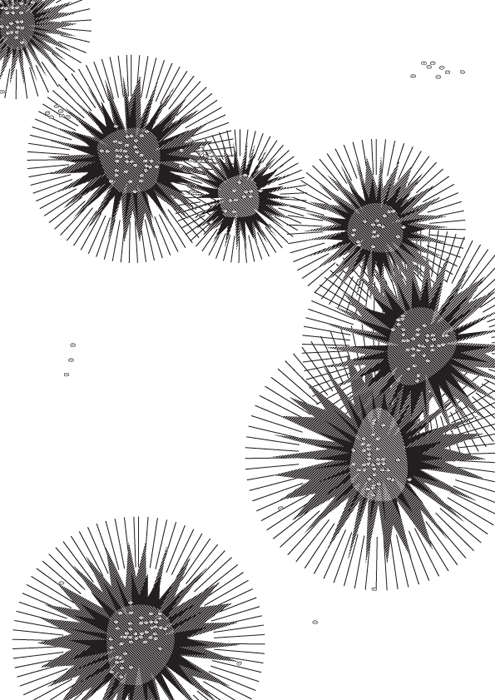
Benjamin Forster, Postulating the Accumulation of Meaning Through the Constantly Becoming Constellation of Signs. Digital Print.
Forster’s art is incisive, albeit its incisions are the effect of a virtual stylus in the form of computer code. Virtual incisions, in cyberspace—a place not found on any map. But these incisions, these graphic marks, do not differ fundamentally from those of Da Vinci’s Mona Lisa or Duchamp’s Fountain (see Briggs & Lucy, ‘Frame’); to the extent that they call upon us to think, they recall the inescapably conceptual nature of art in general. ‘Art doesn’t express; it invents’ (Lucy, ‘Introduction’, 15).
In art, then—though surely not in art exclusively?—ideas are neither tools nor objects; neither an intent to be enacted nor a meaning to be extracted, but rather the very matter of which the artwork is made. No less than paint or clay, light or ink, ideas are materials to be moulded and blended, carved and filtered, stretched and even broken, in the production of a work.
In Forster’s work, ideas are made to break—with even the ‘concrete’ materials put to altogether ‘wrong’ uses. Far from performing their ‘proper’ role in defining metre and giving style to syntax, punctuation marks paint images and combine with rocks to form sculptures; computer disks, meanwhile, manifestly fail to archive the ‘informational contents’ that they contain, an already visible obsolescence belying their promised utility as infallible, prosthetic memory, and reducing them instead to the simple memento they provide of a recent present already superseded by tomorrow.
|
Benjamin Forster, |
Benjamin Forster, |
Visual, linguistic, plastic, virtual, ideational: far from being simply a ‘medium of linguistic communication’, writing is ‘mixed media’ through and through. Words are rocks—blunt and weighty, but not indestructible—while writing is a code that sets the parameters, generates possibilities and attracts reference.
...
When Jacques Derrida noted, more or less in passing, that ‘there is nothing outside of the text’ (Grammatology, 158), his observation produced a storm of controversy in philosophical circles, conjuring an image in the minds of his critics of a world constructed out of nothing but words. While Derrida undoubtedly had hoped to produce other, less ‘outrageous’ thoughts, this seemingly scandalous image returns in different guises across a number of Forster’s pieces.
‘Text’ and ‘writing’, in Forster’s work, come to claim their priority over subjects and objects. Not textual representations of the world, but textual markings as world. Signs as signage—orienting rather than communicating, receding into a background hum rather than interrupting a prior silence. Conveying something other or more than a semantic content, the graphic elements of our natural, urban habitat thus constitute an almost imperceptible horizon—within and against which something like communication or representation may happen.
Benjamin Forster, Our Written World—An attempt to algorithmically discern written marks (2011).
Digital video, 4 minutes 45 seconds.
Thus the function of signifiers (graphemes, textual markings) and signifieds (ideas, information) is rewritten, coded anew: in Forster’s inversion of the commonsense relation of text to world, words, language and information come to feature neither as abstract symbolic media nor, strictly speaking, as discrete concrete objects, but instead as scratchings and scrapings in the very surface of existence.
...
What kind of exchange therefore occurs through writing?
For a long time, and in some circles still now, the reigning thought has been one of writing’s ‘ideality’, which stands apart from the materiality of the physical world (‘sticks and stones’) and social existence (‘the means of production’). Against this view, in which writing amounts to little more than a medium for the exchange of ideas, Forster establishes another system—literally, an economy of words. ‘All works are available for sale in exchange for your words’. ‘Archival Information. Redundancy. Floppy disk and digital prints. 530 x 360 mm. 500 words’.
In an age where commodification of art is the norm (‘culture industry’, ‘artist as celebrity’), Forster insists on the currency of writing. Writing as tender, but also writing as prevalent. ‘Does writing have a future?’ (see Flusser, Writing)—that is a question that can be asked only under the presumption that ideas aren’t bricks, that writing isn’t drawing, that inscriptions aren’t to be found on computer disks, and that words aren’t coins.
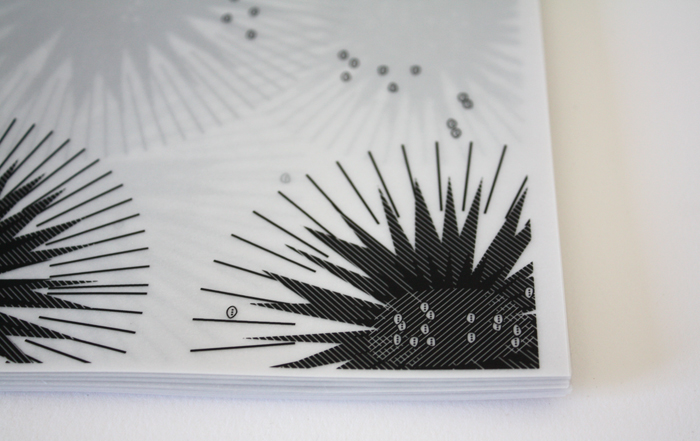
'FREE—Please take one'. Benjamin Forster, Postulating the Accumulation of Meaning Through the Constantly Becoming Constellation of Signs. Installation view (Photo: Benjamin Forster).
‘The Accumulation of Sediment’? Or, ‘How to Do Theory with Bricks and Commas, How to Buy Works with Words’?
‘FREE—Please take one’. No words necessary.
Works
Postulating the Accumulation of Meaning Through the Constantly Becoming Constellation of Signs.
Digital prints on tracing paper.
420 x 297 mm.
Edition of 100.
Archival Information. Redundancy.
Floppy disk and digital prints.
530 x 360 mm.
Concerning Concrete Ideals and Dust.
Broken bricks, graphite and paper.
Dimensions variable.
Our Written World—An attempt to algorithmically discern written marks.
Digital video, 4:45 min.
Edition of 5.
References
Auster, Paul. The New York Trilogy. London: Faber & Faber, 1987.
Briggs, Robert & Niall Lucy. ‘Frame #1: ones & zeroes, light & shade (dimensions: 4, easter eggs: 3)’. Ctrl-Z: New Media Philosophy 1 (June 2012).
Derrida, Jacques. Of Grammatology, trans. Gayatri Chakravorty Spivak. Baltimore: Johns Hopkins University Press, 1976.
Flusser, Vilém. Does Writing Have a Future?, trans. Nancy Ann Roth. Minneapolis and London: University of Minnesota Press, 2011.
Lucy, Niall. ‘Introduction’, in Vagabond Holes: David McComb and the Triffids, eds Chris Coughran and Niall Lucy. Fremantle: Fremantle Press, 2009, pp.13-17.
Ctrl-Z: New Media Philosophy
ISSN 2200-8616





